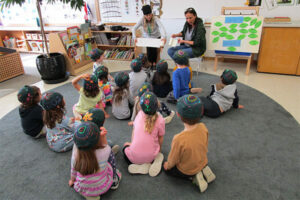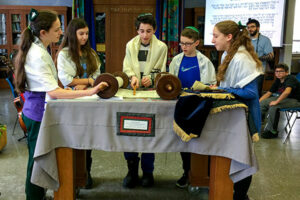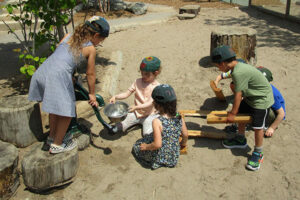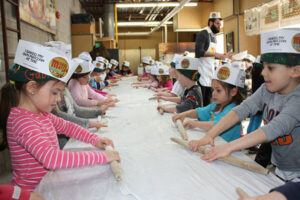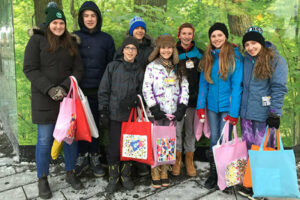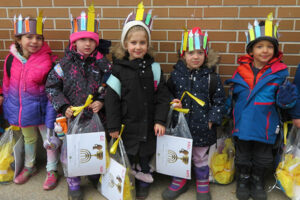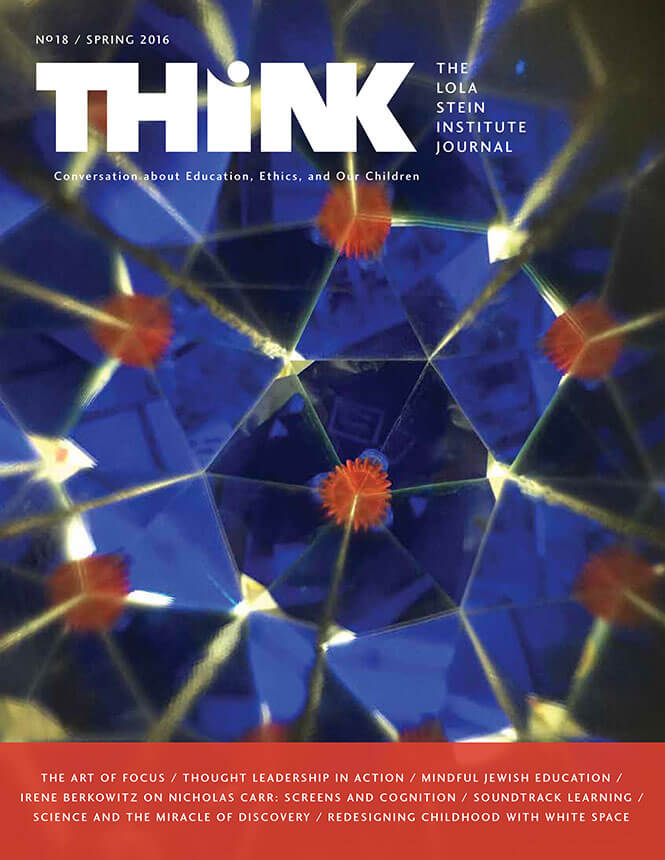- How We Teach

- First Column
- Second Column
- Third Column
- Case Studies

- First Column
- Second Column
- Culture & Community

- First Column
- Second Column
- News & Views

- Admissions

- First Column
- Second Column
- Support Us

- About

- First Column
- Second Column
- Parent Hub
- Attend an Open House
- Take a Tour
- Donate Now
- Calendar
- Blog
- 416-635-1876
- Search
The Big Grade 2 Wow
Radical Amazement Every Day
Rabbi Heschel reminds us that when God created the world, God looked at each day’s work with appreciation, “And God saw that it was good” (Genesis 1:10).
In the Grade 2 community at The Toronto Heschel School, we learn to appreciate the good in all creation, to notice the miracles in everyday life, and see the world through eyes of awe and wonder. When we educators think carefully about this teaching, we see it is a lesson that we must consciously and intentionally teach our students. Why? Why is it important
to see the world with appreciation, through eyes of awe and wonder?In short, to be amazed is to notice and appreciate. With appreciation comes the desire to be considerate and responsible. Our young ones will more likely become socially conscious and responsible adults if they understand the cause and effect of their actions and if they notice and appreciate
their natural surroundings.The school year in Grade 2 begins with all this in mind. Summer comes to an end; fall paints our landscape with shades of red; and Rosh Hashanah celebrates the creation of the world. Effortlessly we have the perfect opportunity for a unit on awe and wonder. The new crop of children enter
a new classroom in a different part of the school; they are already awed to be learning with the “big kids.” They start the year with great curiosity and wonder, eager to get learning and implement the skills they developed the year before.This stage of child development is the perfect time to open children’s eyes to the miracles of the world. The only words hanging on the classroom walls set out the year’s first generative topic: God teaches us to see the world through eyes of awe and wonder. It is a singular message that the fresh students read as they enter. The English words are followed by the Torah text in Hebrew—Vayera Adonai ki tov (transliterated)—“And God saw that it was good.”
What I love most about starting the year this way is that it allows me to build on the children’s natural abilities and innate strengths. Adults often go through their days not noticing the miracles around them, overlooking the beauty of the flowers and missing the shapes of the clouds floating above. Children notice, and when they are encouraged to notice, they pay even more attention.
A child walking through a garden will stop to take a moment to stare at the giant sunflower growing taller and taller as a sight to behold. It might be because he has never seen such a flower before or because the flower is extra large compared to his short stature. But also, a child may stop simply
because she can focus on what is truly amazing about something right in front of her very eyes. Whatever the reason, children are more eager, more capable, and more willing than adults to look at the world and notice the miracles within it.Children can look at the beauty in nature and just say, “Wow,” when the “wow” is truly appropriate. This innate ability is something on which I build. My challenge, though, is how to teach the children to treasure this essential childhood capacity and how to orientate them to hold onto it as they grow up. As a teacher I find “how” to be the greatest question. It is easy to tell the students to focus on the beauty of the world, but how do we bring them to do it habitually? How do we teach them why it matters?
We learn best by doing. With this in mind and this early in the year, I engage my students in authentic experiences in beautiful natural settings and open their eyes to awe and wonder.
At The Toronto Heschel School we are blessed with a beautiful natural space outside the school. We have an enormous playing field with a tall strong willow tree as a centrepiece. At the back of the field lies our Heschel Garden where all grades plant garden beds and, over the year, see and taste the fruits of their labours. The garden is a place for exploration and, of course, amazement. So naturally, my unit on awe and wonder begins in the garden.
My students probe through the garden searching for “wow” moments. They shout out a loud “wow” when they spot something amazing. To help them discover awe-inspiring artifacts in nature, I teach the children to be human cameras.
It takes two people to snap a picture with a human camera. One student, the camera, closes her eyes while the other student, the photographer, leads the “camera” to a point of interest. Human camera pictures are taken on a micro setting, so the photographer needs to take the “camera’s lens,” her friend’s eyes, as close to the object as is possible. When the photographer says “snap,” signalling the photo has been taken, the “camera” opens her eyes to focus in awe on the amazing piece of nature.
When we return to our classroom we sketch our “wow” moments and our photographs taken with the human cameras. We are also studying poetry and we learn that beautiful language helps us describe what we see in the world; we discover that poetry comes through the unique set of a poet’s eyes. One student, wowed by the branch of a perfect climbing tree growing through the fence into our garden, described what he saw as an “outstretched arm lifting me up.”
By the second month of school the students are constantly sharing their “wow” moments with me. They have come to understand that Torah teaches us to see what is good in creation. Towards Yom Kippur we visit the Shoresh
Kavannah Garden to perform Tashlich by the river bank and experience the sights and sounds of a small running river. The children also investigate the garden and learn blessings for encounters with nature.The science component of this unit of awe and wonder sees the students exploring the Earth’s great water cycle, the interconnectedness of bodies of water, and the power of air. By the end of the unit not only can my students explain the scientific terms and properties of water and air but they also show a real appreciation for nature and that which they encounter daily. Fresh water becomes a precious commodity, the stillness of air becomes something noticed, and the power of wind, which amazes us as we run outside capturing it in large garbage bags, becomes a means to create electricity— this is learning that gets a big Grade 2 WOW!
At Toronto Heschel, Grade 2 students develop many important skills. For me, it is their ability to focus on the beauty of the natural world and their learning how to see the miracles in the every day. I hope they carry these with them over their lifetime.
Andrea teaches Grade 2 at The Toronto Heschel School.
NEXT ARTICLE
Thought Leadership in ActionPerspectives
 The Lola Stein Institute (LSI) is a centre of inventive educational thinking and addresses the challenge to re-frame schooling for the exigencies of our times.
The Lola Stein Institute (LSI) is a centre of inventive educational thinking and addresses the challenge to re-frame schooling for the exigencies of our times.

